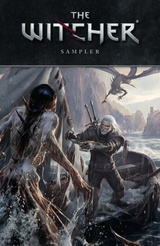 The Hitchhiker's Guide to the Galaxy (1981) produced by Alan J. W. Bell
The Hitchhiker's Guide to the Galaxy (1981) produced by Alan J. W. Bell
At first, the Hitchhiker's Guide to the Galaxy was a radio program broadcast on the BBC in 1978. It became wildly popular, becoming a six-part television program in 1981. Most of the radio cast is back. The story is largely unchanged, starting with the destruction of Arthur Dent's home to make way for a suburban highway bypass. That event is overshadowed by the destruction of the Earth to make way for a hyperspace bypass. Luckily, Arthur's friend Ford Prefect is really an alien and found out about the demolition project. They manage to escape by hitching a ride on the Vogon constructor fleet that destroys Arthur's home world. Thus begins a comic adventure that stretches across space, time, and credulity. The story is episodic and immensely enjoyable. If you have never listened to it, read it (the novels are perhaps the most accessible format), or seen it, you owe it to yourself to have a very enjoyable time.
The TV series makes for an interesting adaptation. The voice actors from the radio do a good job as television actors. Arthur is played by Simon Jones as the quintessential British everyman. In addition to figuring out what's going on, he's looking for a good cup of tea. Different actors were used for Ford Prefect and for Trillian (the other surviving Earthling), whom they meet when they are picked up by Galactic President/Conman Zaphod Beeblebrox. In the radio program, Zaphod is describes as having two heads and three arms. The TV show does its best to recreate that but the special effects are really not up to snuff. The other head looks fake and lolls around a lot. Occasionally they have it talk, though it looks more like a cheap animatronic than an actual head. The third arm is usually tucked in Napoleon-style except for a few scenes where it looks like someone is standing behind the actor and sticking their hand out. Most of the effects are reminiscent of the old Doctor Who visual effects from the 1980s.
On the other hand, the computer graphics (which are actually hand-drawn animations) are fun. The various entries from the Guide are animated in an enjoyable, faux-informational way. They add an element that the radio obviously could not provide. The physical prop Guide looks like a bulky cell phone and the lettering is hardly as big and friendly as one imagines from the radio description. The music and sound effects stand the test of time, though they are basically the same as the radio show.
The show is more for Hitchhiker's completists. I wouldn't recommend starting here. The radio programs or the novels are the best way to get the story.
Recommended for fans of the story.
I watched it on Hoopla, a streaming service my local library has access to. I guess (from the ads tacked on the end of episodes) that it is available on streaming through Britbox. It's also available on Amazon Prime.























































